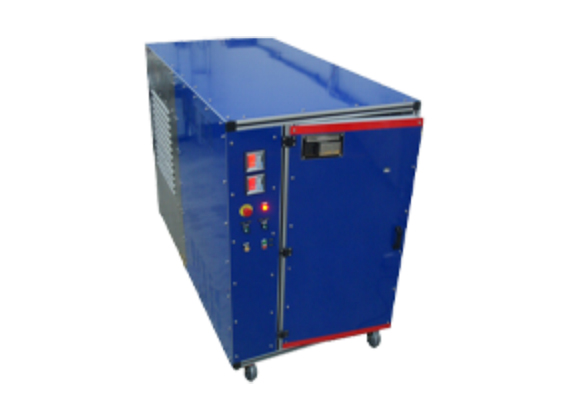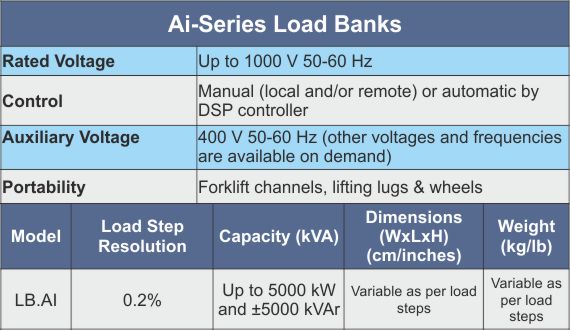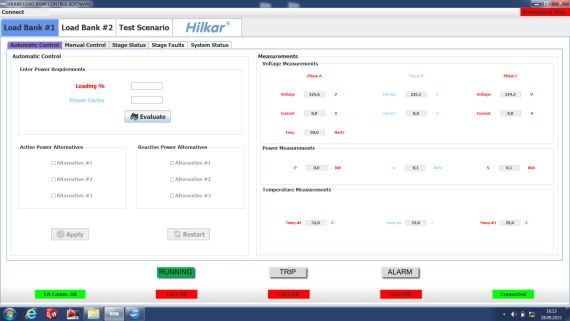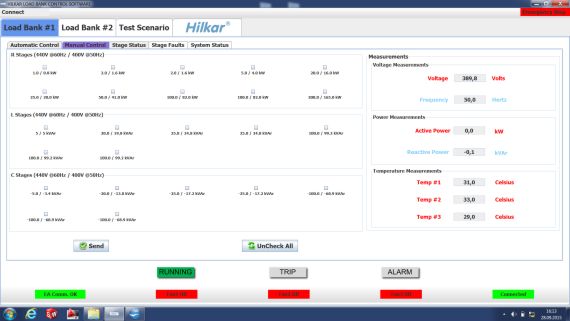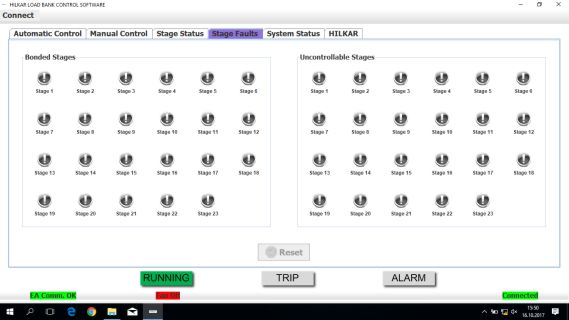General
Load banks are devices which contain resistive, inductive and/or capacitive loads, apply the load to an electrical power source and dissipate the power of the electrical source.
Unlike on-site loads, which are highly variable in terms of diverse electrical parameters, load banks provide pre-determined and controllable loads. These in turn serve the power source, using its energy output to test, support or protect.
Portable and stationary load banks incorporate as low as 1 kVAr load step increments for testing small to large generating sets. The fine control resolution ensures accurate load control and power factor targeting adjustments.
Load banks are suitable for both workshop and on-site testing and the units are suitable for trailer mounting.
Features
- Robust design
- Vertical / Horizontal air release
- ISO container or custom made enclosure design
- Integrated remote control system with data capture, monitoring and load step controlling
- Ease of integrated load testing with other load banks
- Corrosion resistant outdoor type paint
- Stainless steel vibration proof
- High temperature class reactors on demand
- IEC 62116, IEEE Std 929 and UL1741 compatible designs
Load banks feature optional touch-type LCD display and/or wireless remote load step switching controller and/or load step & time controller PC software. In addition, controller features include fan start/stop, electrical parameter controls, timing, capturing data, test mode and fault detection. PC controllers are connected to load bank through USB port for connection.
In addition, circuit breaker protections are provided in the load bank and easy access to switchgear compartment and reactors is achieved. In terms of safety; fan failure, low air flow, over-voltage, over temperature and phase sequence protections are included in the load bank.
Area of Usage
- Generator testing
- Ship Testing
- Power Plants
- Telecommunication Sites
- Mining
- Military Establishments
- Data Centers
- Battery Systems
- UPS Systems
- Inverters
Technical Features
- DC or 50 - 60 - 400 Hz
- Resistive ( up to 36 kV )
- Inductive ( up to 36 kV )
- Capacitive ( up to 36 kV )
- Power Analyzer Measurements : V, A, W, VAr, Hz, cosPhi
Required Information for Quotation
- Applied voltage and frequency
- Mobile or stationary
- Load step resolution
- Indoor or outdoor service
- Resistive, Inductive, Capacitive
- Capacity (kW, kVA, kVAr)
- Blower and control voltage
- Internal and/or external control power
- Meters (Voltmeter, Ammeter, kW meter, kVA meter, cosF, frequency meter)
- Optional computer interface RS 232 / RS 485 (wireless computer interface on demand)
- Automatic controller
- Wireless remote control
- Protection degree: IP20/indoor, IP20/outdoor under roof, IP55/outdoor
Control
Load banks can be controlled via local, remote, wireless remote or automatic control systems.
Local control: Control panel self-contained in Load Bank with load control button and/or touch panel.
Remote control: PC software controlled with data cable thru a USB connection input in a location away from the physical load bank for controlling predetermined load steps, power factor, timing, capturing data, test mode and fault detection.
Wireless remote control: Load steps and main controlling function of the load bank is achieved by an ergonomic hand-held remote control.
Automatic control: DSP controller with auto control available including auto on-off, auto load regulation, timing, regenerative power response.





